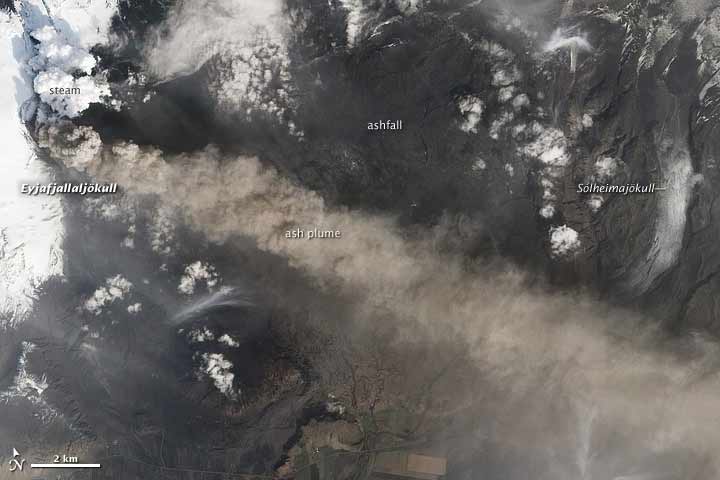
Spain Safe from Iceland Volcano Ash, Study Suggests

The huge clouds of ash currently wafting over Europe from Iceland’s continuously erupting Eyjafjallajökull volcano may be a new inconvenience for weary air travelers. But geologic records show that Iceland’s volcanoes have sent ash over the continent many times in the last 50,000 years.
One place, however, seems to be largely spared – Spain; this could make that country an ideal emergency landing hub for airplanes during eruptions, scientists suggest.
A group of scientists (called the RHOXTOR research group) from Royal Holloway, at the University of London and Oxford University is dedicated to the study of past volcanic ash falls in Europe, and holds records of their sources, distributions and ages spanning the past 50,000 years and more.
Scientists can use this information to figure out how often volcanic activity recurs and the patterns of ash dispersal over Europe.
"One interesting point that emerges from our database is the common transport patterns of the Icelandic ash falls and, more importantly, the apparent absence of volcanic ash from sites in Spain," said Simon Blockley, from the Department of Geography at Royal Holloway.
The RHOXTOR team has found during recent investigations that volcanic ash is absent from sediments in Spain over the last 40,000 years.
Volcanic ash (also known as tephra) is composed of particles that include volcanic glass shards that range in size depending on the distance from the source volcano. Ash that has travelled from Iceland to Britain and adjacent parts of Europe is usually composed of tiny glass particles between 0.025 and 0.1 millimeters in size, and not usually visible to the naked eye except when concentrated in plumes, which can be seen in satellite photos.
Get the world’s most fascinating discoveries delivered straight to your inbox.
Records of past events can be assembled, because the glass falls into lakes, streams and estuaries, and on to peat and soil surfaces, where it becomes preserved within accumulating sediment.
RHOXTOR is building and extending a database of such occurrences, and already holds information for about 25 Icelandic eruptions that have deposited detectable ash over the British Isles and parts of continental Europe during the last 15,000 years, attributed mainly to the Hekla, Katla, Grimsvötn, Askja and Torfjajökull volcanic centers.
One of the most widespread of these ash dispersals, known to geologists as the Vedde Asha, erupted about 12,200 years ago, and had a remarkably similar distribution to that recorded for the Eyjafjallajökull eruption. This ancient eruption deposited Icelandic tephra as far south as Switzerland, as far east as Russia and over much of the North Atlantic, reaching as far west as the Labrador Sea.
But Spain seems to have been spared in many of these past eruptions.
"So far the number of sites investigated in Spain for these tiny volcanic glass particles is relatively low, and there is therefore urgent need for further research," Blockley said. "But the evidence uncovered thus far lends support to the proposal to view Spain as a potential emergency international air travel hub during times of Icelandic ash dispersal over Europe."
- Gallery: Iceland Volcano's Fiery Sunsets
- How Much Longer Will the Eyjafjallajökull Eruption Last?
- Top 10 Greatest Explosions Ever
 Live Science Plus
Live Science Plus






